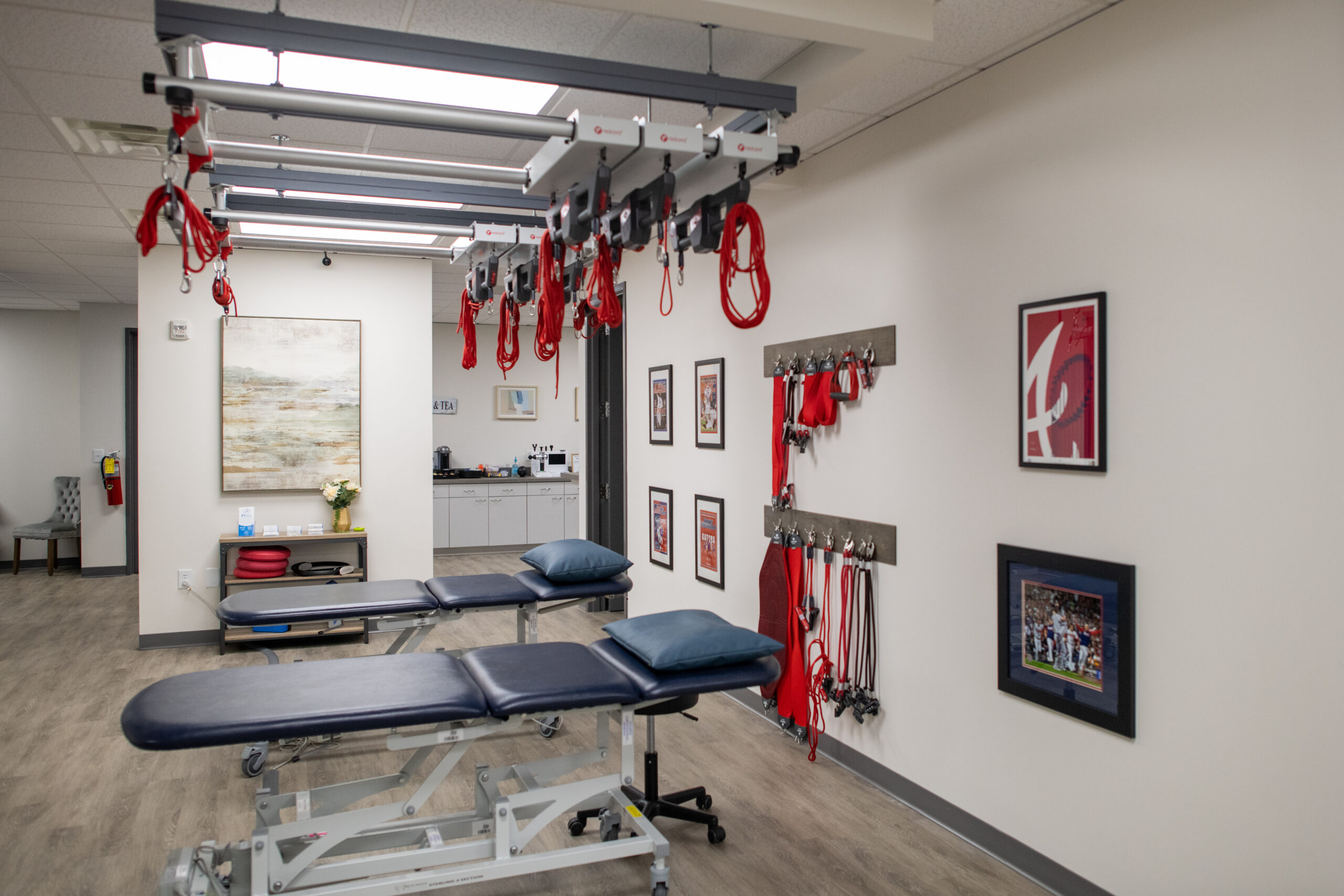Sacroiliac Joint Dysfunction (SIJD) is a musculoskeletal problem that may account for up to 30% of lower back pain. SI joint pain is typically located in a focal area at or around the PSIS (Posterior Superior Iliac Spine) at the attachment of the long dorsal ligament on the sacrum (tailbone). SIJD is either the result of hypermobility (too much motion) or hypomobility (too little motion or compression).
A hypermobile SI joint is usually the result of some type of trauma such as a fall on the buttock, motor vechile accident, or child birth. In a hypermobile SI joint both muscles and ligaments can be affected and cause instability. Hypermobility can also lead to pelvic floor dysfunction, piriformis syndrome, lower back pain with or without sciatica, and hip problems.
A hypomobile SI joint is overly compressed due to faulty muscle patterns which can create a loss of ROM across the joint. These faulty muscle patterns can be the result of hip labral pathology, mechanical low back pain, herniated disc, and/or inflammation in the SI joint itself. In this case the SI joint is the victim and not the criminal and muscle patterning must be restored to alleviate the pain. Hypomobile SI joint problems are usually myofascial in nature.
Redcord or Neurac (Neuromuscular Activation)—is a suspension system that allows your physical therapist to both assess and restore faulty movement patterns that may be affecting pain and/or function.
Some of the most common movement pattern problems that can occur are in the Posterior Chain, Anterior Chain, and/or Lateral Chain.
The Posterior Chain refers to all the muscles on the backside of the body from your head to your heels and plantar fascia.
This includes hamstrings, gluteus maximus, calves, latissimus dorsi, rotator cuff, and erector spinae muscles of the neck, thoracic spine, and low back. The posterior chain is important for sitting, standing, going from sit to stand, squatting, walking, and running. Deficits in the posterior chain can lead to SIJ dysfunction if the glutes are not stabilizing the posterior aspect of the pelvis resulting in sacral torsions and mechanical low back pain. A faulty posterior chain results in over recruitment of the hamstrings, posterior pelvic floor, and erector spinae muscles and under recruitment of the deep stabilizing multifidus muscles and gluteus maximus.
The Lateral Chain
refers to the muscles/fascia/soft tissue that spans the outside of the body. It includes the lateral lower leg, IT band, gluteus medius, rib muscles, and neck rotators. The lateral chain is important for cross body activities, walking and running. Deficits in the lateral chain can lead to IT band syndrome, over-pronation, and neck/lower back pain. Deficits in the lateral chain can present as facilitation of the Quadratus lumborum (side low back pain) piriformis (piriformis syndrome), and adductor over-recruitment with glute medius under recruitment.
The Anterior Chain refers to the muscles on the frontside of your body and include your pectoralis muscles, abdominal (6-pack muscles), quads, and shin muscles . The anterior chain is important for core stability, lifting objects, and pushing and pulling activities. Problems associated with anterior chain deficits include shin splints, quad strains, abdominal strains/weakness, and pectoralis muscle strains. Deficits in the anterior chain can result in over recruitment of the 6-pack muscles (Rectus abdominus) and under recruitment of the Transversus Abdominus (core).
Redcord training allows the neuromuscular system to recalibrate through specific muscle pattern activation to improve problems with posterior, anterior and lateral chain deficits. By restoring these chains of muscle the body functions in a more balanced manner, thus reducing the chance for common orthopedic problems. Hypomobile SI joints can rebalance with redcord by decompressing the joint. Hypermobile SI joints too will become stronger and more balanced with redcord training and eventually provide the necessary muscular stability across the joint.
Authored by David Mesnick, PT, OCS, cMDT



